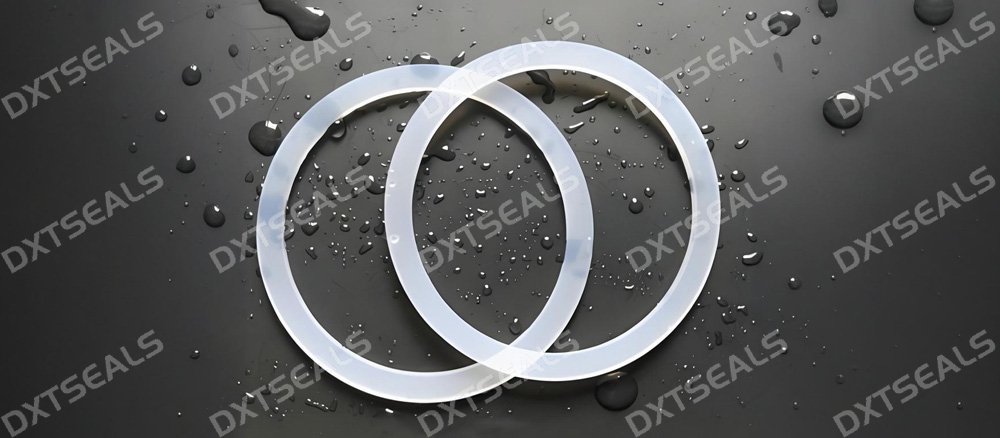Introduction
In many industries, from automotive and marine to industrial systems, preventing water ingress is a crucial concern. Whether it's automotive doors, marine vessels, or industrial pumps, ensuring reliable sealing against water exposure is essential to protect sensitive components and enhance the longevity of equipment. Rubber seals have become a go-to solution for water-resistant applications due to their durability, flexibility, and ability to perform in harsh environments. In this article, we’ll explore the essential features of rubber seals and their significance in water-resistant applications.
Why Rubber Seals Are Ideal for Water-Resistant Applications
Rubber seals are particularly well-suited for water-resistant applications for several reasons:
-
Excellent Flexibility
Rubber seals are incredibly flexible, which makes them capable of conforming to different shapes and creating tight seals in joints and interfaces. This flexibility ensures that rubber seals can accommodate movements caused by pressure changes, temperature variations, or vibrations, which is essential for applications where water resistance is required. -
Waterproof Capabilities
Rubber materials such as Nitrile Rubber (NBR), EPDM, and Silicone are known for their excellent water-resistant properties. They create tight seals that prevent water from entering the system, even in highly humid or submerged environments. These materials can maintain their sealing performance even when exposed to direct water flow, making them ideal for waterproof applications. -
Durability and Longevity
Rubber seals can withstand prolonged exposure to water without degrading, cracking, or losing their sealing capabilities. Many rubber types, such as EPDM, are resistant to UV rays, ozone, and weathering, which enhances their longevity in outdoor or marine environments where they are exposed to the elements. Additionally, they resist degradation from frequent cycles of wet and dry conditions. -
Temperature Resistance
Rubber seals used in water-resistant applications often need to endure extreme temperature fluctuations. Whether exposed to hot water in industrial systems or freezing conditions in outdoor environments, rubber seals maintain their flexibility and integrity. For example, Silicone seals offer excellent temperature resistance, while EPDM seals provide resistance to both high and low temperatures. -
Chemical Resistance
Rubber seals also offer excellent resistance to various chemicals commonly found in water, such as salts, acids, and alkalis. This makes them ideal for use in applications such as marine vessels and industrial pumps, where exposure to chemical contaminants is common.
Key Applications of Rubber Seals in Water-Resistant Environments
✅ Automotive Industry
In the automotive industry, rubber seals are used in doors, windows, trunks, and sunroofs to ensure a water-tight seal. These seals help prevent water from entering the vehicle, keeping the interior dry and protected from rust and corrosion. Rubber seals are also used in engine components to prevent water from affecting sensitive machinery.
✅ Marine Industry
Rubber seals are critical in marine environments to protect ships, boats, and offshore equipment from water infiltration. From hatch seals to porthole gaskets, these seals ensure that water doesn't enter the vessel, contributing to the safety and durability of marine structures.
✅ Industrial Systems
In industrial applications, rubber seals are often used in pumps, valves, and other machinery that must operate in wet conditions. These seals prevent water from interfering with the performance of industrial equipment, ensuring that systems remain efficient and free from rust or corrosion. Nitrile Rubber (NBR) and EPDM seals are particularly popular in these environments due to their resistance to water and chemicals.
✅ Construction and Building
In the construction industry, rubber seals are used for waterproofing building foundations, windows, doors, and roofs. These seals ensure that water does not infiltrate the structure, preventing water damage and increasing the lifespan of the building.
How to Choose the Right Rubber Seal for Water-Resistant Applications
When selecting rubber seals for water-resistant applications, consider the following factors:
-
Material Selection
Choose the rubber material based on its water resistance, temperature range, and chemical compatibility. For example, EPDM is ideal for outdoor use due to its UV and weather resistance, while NBR works well in environments where exposure to oils and water is common. -
Seal Design
The design of the seal, such as O-rings, gaskets, or lip seals, plays a role in its effectiveness. Select the design that best fits the application, whether it involves high-pressure sealing, static sealing, or dynamic movement. -
Temperature and Environmental Conditions
Make sure the selected seal material can handle the temperature extremes and environmental factors (e.g., exposure to UV, ozone, or saltwater) of the application. -
Size and Fit
Ensure that the rubber seal fits precisely in the application to create an optimal water-resistant barrier. Proper installation and sizing are critical for maintaining long-term performance.
Conclusion
Rubber seals are a fundamental component in many water-resistant applications across various industries. Their ability to create effective seals in wet conditions, along with their flexibility, chemical resistance, and durability, makes them an essential part of automotive, marine, and industrial systems. Whether you are looking to protect sensitive components from water damage, improve the performance of machinery, or ensure safety in harsh environments, rubber seals provide reliable, long-lasting solutions.
By understanding the key features of rubber seals and carefully selecting the right material for the job, businesses can ensure optimal performance, increased lifespan, and reduced maintenance costs in water-exposed environments.

